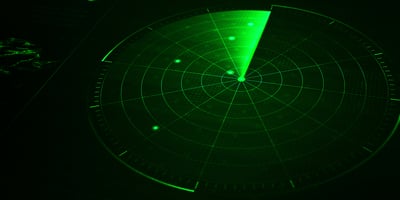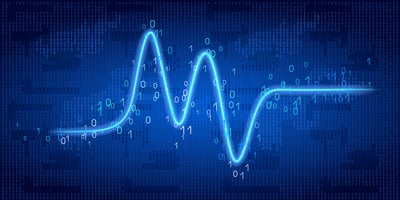Next-generation systems need test equipment that offers a deep level of characterization. This blog...
Testing Advanced Radar Systems? Consider These Test Device Capabilities for Optimal Results
Radar systems are improving by the day, driving the need for new testing requirements and test instruments that can capture and analyze their advanced performance.
The blog post below reviews three important topics and relevant test device capabilities when characterizing modern radar technology – RF signal generation, secondary surveillance radar (SSR) test requirements, and measuring GaN amplifier linearity.
Signal Generation
During testing, engineers may need to substitute a radar system’s local oscillator (LO) with a high-performance synthesizer or signal generator. LO substitution enables engineers to:
- Determine if the LO itself is the cause of performance issues.
- Evaluate the performance of up/downconverter chains without LO characteristics distorting results.
The phase noise and frequency switching speed of a signal generator can determine its viability as an LO substitute. High phase noise levels can completely obscure return signals that are close to the initial transmit frequency. In addition, agile radar systems can quickly change between different operating frequencies to limit interference, jamming, or improve target detection. Fast switching signal generators not only accommodate this performance but reduce test time by quickly stepping over large frequency and/or amplitude ranges.
Typically, a signal generator with a traditional architecture that delivers both low phase noise and fast switching comes at a high cost. That’s why the Boonton SGX1000 Series RF signal generator blends different architectures to achieve the best in phase noise (-122 dBc/Hz at 3 GHz with a 10 kHz offset) and switching speed (350 μs) at an affordable price.
SSR Testing
Throughout an SSR system’s lifecycle, different instrument capabilities are prioritized over others. At the early stages of design, engineers require high-performance test equipment. For example, Boonton RTP5000 Series peak power sensors, which can connect to a PC or the PMX40 RF power meter for a benchtop solution, provide:
- 195 MHz of video bandwidth (VBW) for accurate envelope power measurements.
- 3 nanosecond rise times to track the narrowly space, fast rising edges of pulsed radar signals.
- 100 picosecond time resolution to capture interpulse timing and pulse shapes.
The installation stage utilizes test devices that are easy to transport around the aircraft. During maintenance, test instruments need multi-channel measurement capabilities to verify nominal power levels at different points in the system. Instruments like the RTP5000 Series offer the fastest measurement rate of 100,000 measurements per second, capturing SSR pulses in essentially real time over long measurement cycles when using the Boonton Measurement Buffer Mode software. If a fault were to occur, high-performance equipment that can conveniently be transported to the issue’s location expedites the troubleshooting process.
Choosing a solution, such as the RTP5000 Series and PMX40, that meets the requirements for each radar lifecycle stage avoids high equipment costs and measurement inaccuracies.
Amplifier Linearity
GaN power amplifiers are used throughout the military/aerospace industry, from radar systems to electronic warfare to satellite networks. With crest factor (CF) measurements, engineers can determine a GaN power amplifier’s linearity to better understand its quality. CF takes the ratio of a waveform’s peak value to its average power, hence why it is also called the peak-to-average-power ratio (PAPR).
This method involves using a band-limited additive white Gaussian noise (AWGN) signal as the input to the amplifier under test. The AWGN signal is used to simulate real-world, wideband communications signals.
Peak power sensors with appropriate VBW capabilities measure the crest factor of both the incident signal and the amplifier’s output. Comparing the two CF values can reveal linear or nonlinear performance. For example, an amplifier that behaves nonlinearly and compresses a signal’s highest peaks would have a reduced output CF despite an increase in input power.
Compared to other linearity measurement options, such as noise power ratio (NPR) testing and analyzing 3rd order intermodulation products, the CF method depicts compression more accurately, uses lower cost test devices, and simplifies operation for the user.
READ NOW: eBook on Testing Advanced Radar Systems
Learn more about low-cost and high-performance signal generation for radar systems, SSR testing needs, and measuring GaN amplifier linearity in the Microwave Journal eBook, “Modern Radar Technology.” Ensure your radar system operates at its highest performance standards and download the eBook today.




